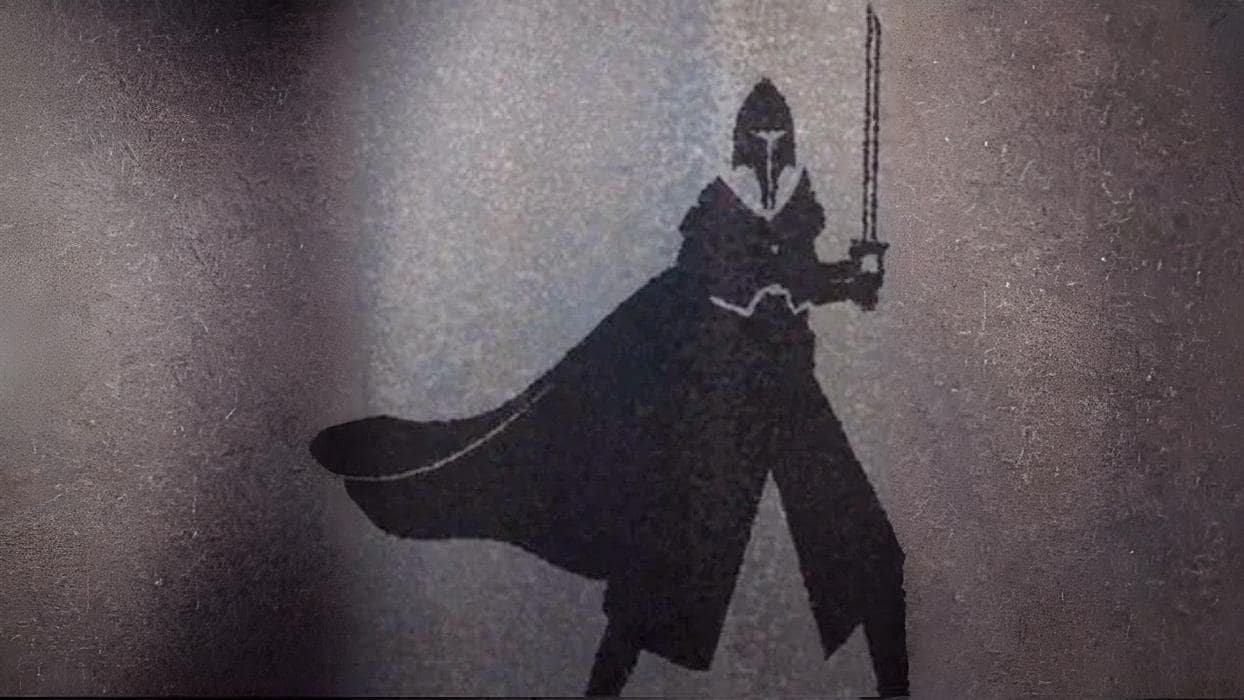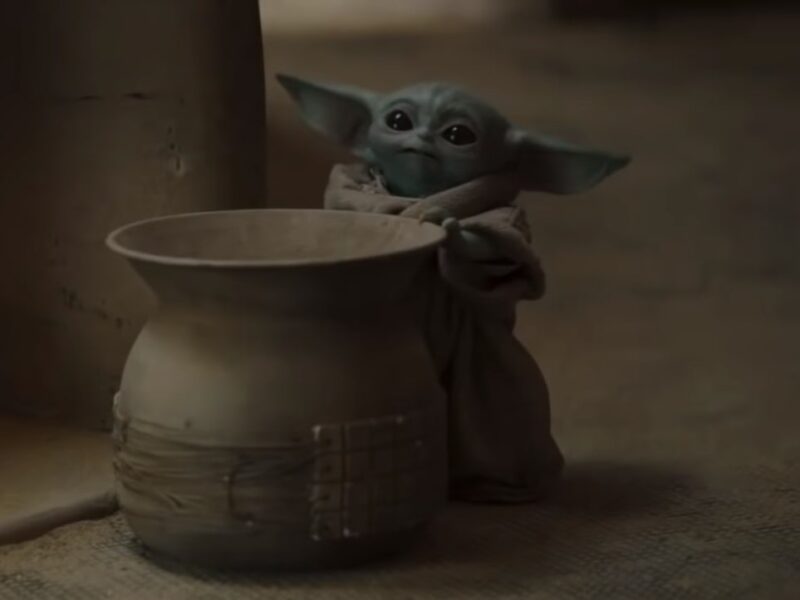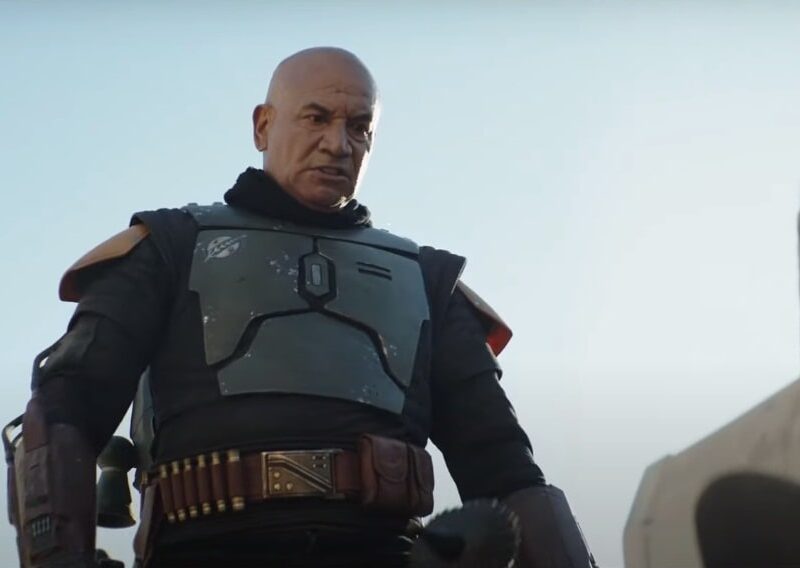1. Who is Tarre Vizsla?
Tarre Vizsla was a Force-user Human male from Mandalore. He lived during the Draggulch Period.
Vizsla was one of the few Mandalorians to ever join the Jedi Order. He served as a Jedi Guardian during the last hundred years of the New Sith Wars. Vizsla reluctantly became the Mand’alor during the first half of the Republic Dark Age, ruling the Mandalore sector as its Jedi Lord. However, he was torn between his duties to his people and the Jedi Order. Unable to do both jobs well, he eventually stepped down sometime before the Return.
Vizsla participated in the Light and Darkness War as a member of the Army of Light’s Third Legion. He perished alongside Lord Hoth’s hundred Jedi volunteers in the Valley of the Jedi, victims of Skere Kaan’s thought bomb. His spirit remained trapped in the Valley’s Force nexus for over a thousand years until Jedi Knight Kyle Katarn liberated him in 5 ABY during a mission to Ruusan.
Though not as famous in history as Mandalore the Uniter, who led the Return, Tarre Vizsla was seen positively by Mandalorians during his short time as Mand’alor for defending against New Sith attacks on the Mandalore sector. Members of Clan Vizsla and the New Jedi Order celebrated him for showing the best of both Mandalorian and Jedi ideals. Johun Othone included a big statue of Vizsla among other fallen heroes of the Army of Light in the Valley of the Jedi.
2. How Did Young Tarre Vizsla Begin His Warrior Journey?
Tarre Vizsla was born to members of Clan Vizsla around the start of the Republic Dark Age in 1100 BBY. Following Mandalorian tradition, he came of age at thirteen. Vizsla then joined many other Mandalorians working as mercenaries and bounty hunters in the war-torn galaxy.
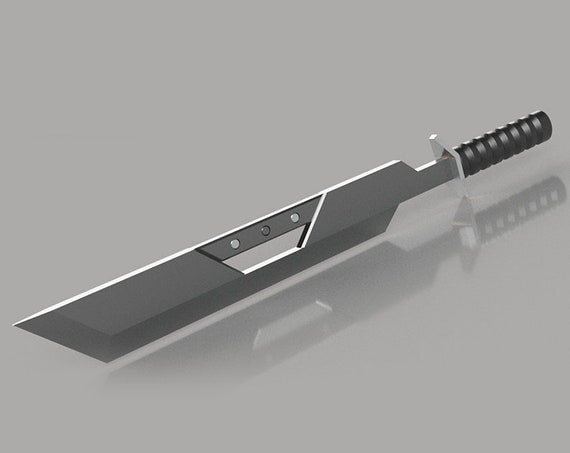
He focused on learning to use bladed weapons, especially the beskad, a traditional Mandalorian saber made from lightsaber-resistant Mandalorian iron.
Vizsla became very skilled with the beskad and had unusually fast reflexes. These talents caught the attention of his Jedi and Sith employers during his time as a mercenary.
3. How Did Tarre Vizsla Become the First Mandalorian Jedi?
Though Vizsla sometimes worked for various Sith groups that made up the New Sith Empire, he often found jobs on worlds left behind by the shrinking Galactic Republic. Jedi recruiters approached Vizsla during one of these jobs. They told him he was Force-sensitive and invited him to join the Jedi Order, where he became the first Mandalorian Jedi.
During his studies with the Jedi, Vizsla used his existing skills with a beskad to learn lightsaber combat. He focused on the Shii-Cho form because it was similar to the sword techniques he already knew.
After several decades of studying under different Masters, Vizsla became a Jedi Knight. He was seen as one of the best Form I duelists of his time and one of the most promising Jedi Guardians in recent memory. He used his warrior skills to serve the Republic, fighting with the Republic Military against the New Sith Wars and guarding a series of Jedi Supreme Chancellors before and during the Republic Dark Age.
However, as one of only a few Mandalorians to join the Jedi Order, some of Vizsla’s fellow Jedi were suspicious of him because of his Mandalorian background and his previous work with the New Sith.
4. How Did Tarre Vizsla Create the Darksaber?
Even though Tarre Vizsla was a great duelist and expert in Form I by the time he became a Jedi Knight, he never felt as comfortable with a standard lightsaber as he had with the heavy Mandalorian beskad sword. He didn’t like how light the lightsaber blade felt, thinking this made it unpredictable and hard to use. He also didn’t like the round grips on most lightsaber hilts, preferring the slimmer shape, angled crossguard, and oval grip of the beskad.
Vizsla decided to create his own weapon that combined the comfort of a beskad’s hilt with the features of a traditional lightsaber to make a weapon that suited his needs.
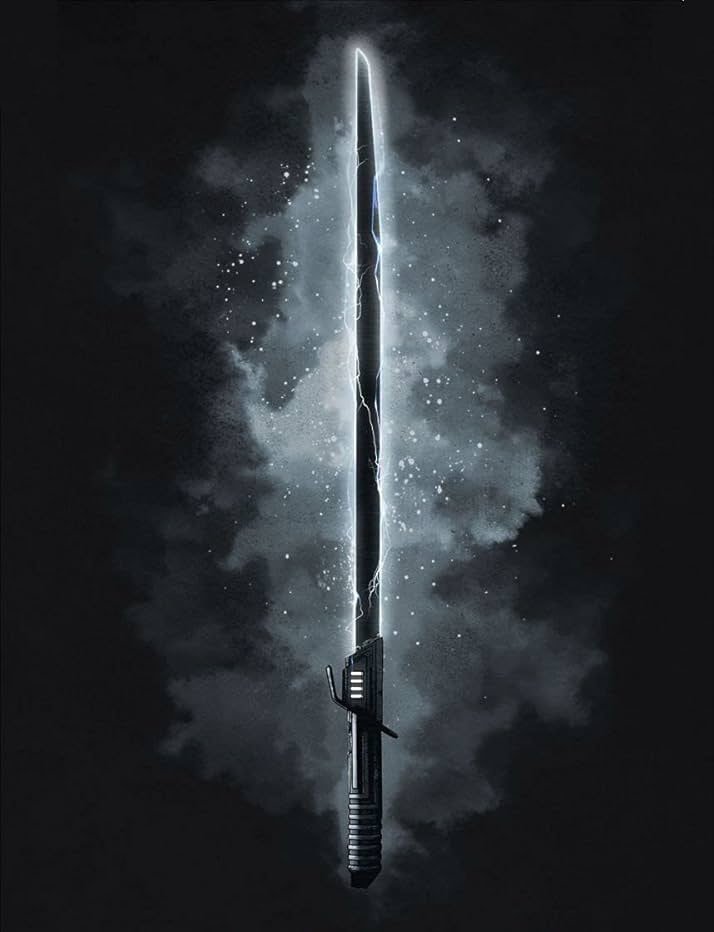
The result was a weapon known as “the Darksaber.” Its hilt was shaped like Vizsla’s beloved beskad sword. It had a special wiring system and a slit-shaped blade emitter that made the plasma core look like a thin, flat, metal blade with a point, similar to a beskad. The synthetic lightsaber crystal gave the blade a unique black color that made people feel a bit uneasy when they looked at it up close.
However, because Vizsla didn’t correctly copy the natural process of crystal formation when he made the crystal, the Darksaber’s blade was unstable. It often flickered and crackled with electricity along its edge.
5. What Was Tarre Vizsla’s Role During the Republic Dark Age?
During the last hundred years of the New Sith Wars, the Republic was falling apart. This led to the Republic Dark Age. Because of galaxy-wide unrest, widespread Candorian plague, and the Republic’s decline, many sectors had to protect themselves against bandits and the constant threat of the New Sith.
As the last strong force in the galaxy, the Jedi Order had to take on more responsibilities in the fight against the Sith. Many Knights and Masters led efforts to protect worlds left undefended as the Republic collapsed. Over time, they became “Jedi Lords” of their territories as they got more involved in local politics.
Much to the annoyance of his supervising masters on the High Council, Vizsla often went on long journeys across the galaxy during this time. He often neglected his duties as a Jedi Knight to go on “knight errant” missions deep into New Sith-controlled space. Vizsla’s travels increasingly took him back to the Mandalore sector, home of his Mandalorian people. This region was plagued by widespread banditry, Candorian plague, piracy, and attacks by the New Sith Empire, which controlled an area just north of the Mandalore sector.
6. How Did Tarre Vizsla Lead the Mandalore Sector?
Worried that the New Sith were trying to get a steady supply of lightsaber-resistant Mandalorian iron to make their beskar’kandar armor, Vizsla rallied the clans and led several missions to drive the Sith out of the sector. Although there weren’t many Mandalorians because of multiple outbreaks of the Candorian plague, Vizsla’s leadership and fighting skills led the Mandalorians to win several battles against New Sith invaders. During this time, the Darksaber became a symbol of the Mandalorian defenders, representing the Mandalorian people’s determination to stay independent in the face of foreign invasion.
Because of Vizsla’s string of victories, many grateful clan leaders urged him to take up the kyr’bes and claim the unclaimed title of Mand’alor as the formal leader of the clans. Though conflicted because of his divided loyalties and ongoing duties to the Jedi Order, Vizsla grudgingly agreed to “keep the seat warm” as the temporary Mand’alor until a better candidate could be found. He served as the de facto Jedi Lord of the Mandalore sector for some time. Like many of his Jedi Lord peers, he eventually married and had a Mandalorian heir to Clan Vizsla, following the rules of the Resol’nare.
However, while Vizsla successfully served as a traditional Mand’alor – uniting the people and providing direction when needed while staying out of clan affairs otherwise – some Mandalorians criticized him for his occasional absences from Mandalorian Space due to his continued service to the Jedi. Also, because of their small numbers and frequent outbreaks of disease and famine, the Mandalorians under Vizsla were largely unable to stop the widespread banditry and piracy that plagued the sector, despite Vizsla’s efforts to organize task forces for this purpose.
7. How did Aga Awaud initiate the Mandalorian Return, and what was Tarre Vizsla’s role?
In 1060 BBY, a particularly infectious outbreak of Candorian plague reached Mandalore and spread throughout the sector, greatly reducing the population and costing Vizsla his wife and many of his Clan Vizsla relatives and family members. Though Vizsla managed to get some medical supplies and food from the Republic through a mix of favors and outright pressure, the Mandalorians suffered greatly.
Vizsla, as Mand’alor, largely blamed himself for failing to adequately prepare the sector for another infectious outbreak of the disease. He stepped down as Mand’alor soon after, citing both his failures to stop piracy and the plague and his unnecessary role due to the decreased number of Sith attacks on the sector because of the ongoing Sith civil war. He returned to the Jedi Temple feeling sad and regretful, though following the rules of the Resol’nare, he returned to defend Mandalorian Space whenever called.
In 1058 BBY, a Mandalorian mercenary from Clan Awaud named Aga Awaud returned home to Mandalore after a long time working in the wider galaxy. Finding both his clan and the Mandalorian population decimated by the Candorian plague and attacked by armed pirates and bandits, Awaud decided to end the decay of Mandalorian society and bring about a period of renewal for his people and the greater Mandalorian way of life. Over the next seven years, Awaud campaigned across the sector and built up a following of like-minded individuals.
Finally, with Tarre Vizsla’s encouragement and public support, he claimed the title of Mand’alor in 1051 BBY. Taking the kyr’bes for himself, Awaud formally announced the Return, calling on all scattered Mandalorian clans throughout the galaxy to come back to the Mandalore sector and strengthen their ancestral homeworlds.
8. What Tensions Did Tarre Vizsla Face with the Jedi Council?
Over the next several decades, Vizsla occasionally participated in the Mand’alor’s campaign to drive out bandits, pirates, and the Sith from the sector. During this time, Vizsla’s neglect of his Jedi duties became more obvious, and he spent more time away from the Jedi Temple. Eventually, he started receiving formal warnings from the Jedi High Council on Coruscant, bringing him into conflict with its Masters and the main political leadership of the Order.
Though he continued to obey the orders of his supervising masters and remained true to the Order and the Jedi Code, he quickly abandoned his assigned duties whenever called back to the Mandalore sector by Mandalore the Uniter, citing the sixth rule of the Resol’nare as his reason.
As the Dark Age went on and the Jedi Lords collectively gained more political power in the galaxy, many began to openly ignore and disregard the orders of the High Council. Over time, the most powerful and influential Jedi Lords organized themselves into their own Grand Council, handling internal matters for their supporters and settling disputes between lesser Jedi Lords across the galaxy.
Though he declined offers to sit on the Grand Council in an effort to maintain his shaky relationship with the main Jedi group, Vizsla sometimes served its members as an advisor, bringing him into further conflict with the masters of the High Council.
9. Why Did Tarre Vizsla Join the Army of Light?
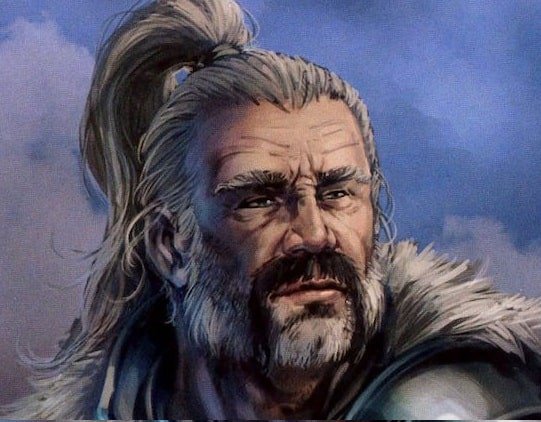
With the fall of Skere Kaan, former star pupil of the High Council, to the dark side in 1010 BBY, the New Sith remnants were radically reorganized into the Brotherhood of Darkness, a rebuilt Sith Empire under Kaan that spanned the galaxy and included the remaining parts of other Sith factions. In response, the Grand Council raised an army of Jedi Lords under Lord Hoth to fight the rising Sith threat, a legendary force known as the Army of Light.
Ready for a final showdown, the resulting Light and Darkness War saw the Jedi and the Sith clash on battlefields across the galaxy in a final dramatic campaign for control of the galaxy.
Conflict between Tarre Vizsla and the Jedi High Council finally came to a head during this last decade of the Republic Dark Age. Though many Knights outright abandoned the High Council and Jedi Temple to join Hoth’s Army of Light without permission, Vizsla submitted a formal request for leave and addressed the Council directly in the High Council Chamber. In the debate that followed, Vizsla was forbidden from joining what the Council saw as an unauthorized organization and ordered to stay on Coruscant.
Disappointed with the Council’s refusal to take responsibility for Kaan’s fall and disgusted by their lack of interest in both acknowledging the threat their former protégé posed and facing the consequences of their inaction, Vizsla invoked the Right of Denial, a rarely-used privilege given to non-Councilors that allowed Jedi to formally protest the Council’s decision and set aside their Knighthoods to become Jedi in little more than name. Giving up the Darksaber to the Council as part of the process, Vizsla denounced the Council’s cowardice and ineffective leadership and left the Order to join the Army of Light.
10. How Did Tarre Vizsla Contribute to the Army of Light?
Lord Hoth and the Jedi Lords of the Army of Light were pleased to have such a renowned duelist as Tarre Vizsla with them, and Lord Newar Forrth readily offered the Mandalorian a position as a knight bachelor in his Third Legion of Light.
Over the next decade, Vizsla participated in many campaigns against the Brotherhood of Darkness, most notably the Battle of Corsin. In this particular battle, Vizsla and the Third Legion fought the Brotherhood along with a large Mandalorian task force created by Mandalore the Uniter to protect the sectors along the Hydian Way.
Vizsla further built upon his already considerable reputation as a warrior as the war went on, winning praise from his peers and commanding officers despite his advanced age. Though offered higher-ranking positions in the Army of Light, Vizsla was content with field grade ranks so he could stay close to the battlefield as a fighter.
11. Tarre Vizsla’s Death
In 1001 BBY, faced with an imminent Brotherhood invasion of the Core Worlds, the forces of the Army of Light gathered on the Sith staging ground of Ruusan for a final confrontation that would decide the fate of the galaxy. Bringing together all their remaining forces, the Jedi and Sith fought a series of seven long battles that turned the once lush world into a wasteland of ruined cities and destroyed environments.
By the final battle, both sides were weak and largely lacking in resources, arming their remaining warriors with primitive spears and even recruiting children to serve as soldiers. Hoping to end the last of the Jedi force, Skere Kaan ordered the creation of a thought bomb, a weapon of pure Force energy capable of destroying all life in an affected area. Believing himself and his allies invincible and immune to the effects of such magic, Kaan planned to release the thought bomb on Ruusan.
In response, Lord Hoth, leader of the Army of Light, gathered one hundred Jedi to his side and went into the caves below Ruusan where Kaan had fled during the later stages of the Ruusan campaign. Vizsla went with him, having chosen not to stay with Lord Valenthyne Farfalla and the evacuating remnants of the Army of Light. Confronting Kaan, Hoth and his Jedi followers tried to stop the detonation of the thought bomb, but were unable to reach the fallen Jedi in time.
In an instant, the bodies of the Jedi and Sith near the blast were destroyed, their spirits trapped in torment in the Force nexus created after the bomb’s explosion. All that remained of Vizsla was his beskad and his beskar armor and helmet, buried in ash deep within the caves of Ruusan along with the personal belongings of Jedi and Sith alike.
12. How did Clan Vizsla Recover the Darksaber?
Vizsla’s passing was marked on his adopted homeworld of Mandalore by many of the clans. The aged Mandalore the Uniter led a small ceremony honoring Vizsla in the Oyu’baat, the downtown Keldabe tapcaf in which Vizsla had first reluctantly agreed to serve as Mand’alor decades earlier.
As was common in Mandalorian culture, the members of Clan Vizsla wanted to have Tarre’s armor, helmet, and beskad to preserve his memory, and asked the Jedi for help. However, their request was denied because the Order had difficulty accessing the collapsed caves where Vizsla and his fellow Jedi had died and the High Council wanted to forget the political embarrassment of the Ruusan campaign and the wider Light and Darkness War.
Clan Vizsla then asked for the Darksaber to be returned to them instead, but were again refused by the Order due to both Vizsla’s unresolved invocation of the Right of Denial and a desire to bury the memory of both the battle and the Jedi Lords who had defied them.
Thwarted at every turn, several members of Clan Vizsla came up with a plan to recover Tarre’s unique weapon themselves. The stealthiest among them, previously trained as assassins and spies by various factions during the war, traveled to Coruscant and managed to get into the Jedi Temple during a time when it was largely empty due to losses suffered on Ruusan.
In a heist that became famous in Vizsla family history, these Mandalorian raiders managed to navigate the maze of the Temple down to the artifact storage in the Jedi Archives while avoiding members of the Order and Temple Security Force, successfully recovering the Darksaber held there.
Upon their return to Mandalore, the Darksaber became a valued family heirloom, held only by its greatest warriors even into the era of the Republic Classic era. It remained in the Vizsla clan’s possession until claimed by Darth Maul during the Clone Wars.
13. How was Tarre Vizsla Honored in the Valley of the Jedi Monument?

Not long after the end of the New Sith Wars, Johun Othone, Lord Hoth’s former Padawan, began publicly asking the High Council for permission to honor the fallen of the Light and Darkness War with a large memorial on Ruusan.
Though the Council refused because they wanted to forget the war and bury the memory of the Army of Light, Chancellor Tarsus Valorum and the Senate supported Othone and offered the young Chancellor’s Guard significant financial backing to carry out construction of his planned monument.
Built around the area of the cave system where the one hundred Jedi had died, the resulting Valley of the Jedi monument included several large statues of notable Jedi Lords and Knights, including Lord Hoth and Tarre Vizsla. Though Ruusan was lost due to changing hyperspace routes in later centuries, Othone’s monument lasted for over a thousand years into the era of the New Republic.
In 5 ABY, during a mission to Ruusan, the Jedi Knight Kyle Katarn rediscovered Ruusan and freed the tormented souls housed in the Valley’s Force nexus from their suffering, as foretold in the Poem of Ages. Finally released from torment, Vizsla’s Force spirit was free to leave the world of the living and become one with the Force, ending his eleven hundred-year existence.
In the years that followed the reopening of Ruusan, members of Clan Vizsla searched the caves of the Valley of the Jedi and managed to recover Tarre’s decaying beskar helmet, armor, and sword, properly burying the artifacts in their clan headquarters and putting their ancestor’s memory to rest.
14. What Legacy Did Tarre Vizsla Leave Behind?
As the immediate predecessor of Mandalore the Uniter, who led the Return, Tarre Vizsla was largely overshadowed in life and in later histories of the Mandalorians by his contemporary Aga Awaud.
Likewise, as a rebel Jedi Knight who openly criticized the High Council, invoked the Right of Denial, and openly associated himself with the Jedi Lords of the Army of Light, Vizsla was mostly left out of the histories of the old Jedi Order because the High Council wanted to bury the political embarrassment of the Light and Darkness War.
However, among those Mandalorians who lived during his time as Mand’alor, Vizsla was remembered positively for both keeping the clans united in the chaos just before the Return and successfully preventing the New Sith Empire from gaining a foothold in the Mandalore sector.
Likewise, among the members of Clan Vizsla, Tarre Vizsla was honored as a model of Mandalorian honor who did not let his service to the Jedi interfere with his observance of the Resol’nare or his strong dedication to his people.
The New Jedi Order, following Kyle Katarn’s rediscovery of the Valley of the Jedi in 5 ABY, had a more respectful view of Vizsla and his fellow Jedi Lords than the previous version of their order, and praised their sacrifice on Ruusan as an example of the Jedi ideal of self-sacrifice.
15. How Did Tarre Vizsla’s Personality Develop Over Time?
As a Mandalorian from an ancient clan, Tarre Vizsla was raised in the traditional warrior culture of the Mandalorian people, and his personality was largely shaped by his lifelong relationship with combat and warfare. Like many Mandalorians, he saw combat not as evil but as a test in which people were challenged, toughened, and improved into better versions of themselves. He believed combat, like fear, showed the limits of people’s physical and mental endurance and was a way to test and ultimately go beyond those limits.
When he joined the Jedi and learned about the wider world of the Force, he also came to see combat as a way to fully understand the Living Force in the frantic interaction of battlefield participants. Despite the presence of the dark side in the death and hate that warfare created, Vizsla also saw the light side in the self-sacrificing heroism of soldiers and civilians alike.
Vizsla spent much of his life trying to carefully balance his often-conflicting duties to the Mandalorian people and the Jedi Order. As a Mandalorian traditionalist with Neo-Crusader views, he strictly followed the six rules of Resol’nare, wearing stylized beskar armor decorated with Jedi symbols instead of traditional Jedi clothing, writing and speaking in Mando’a whenever possible, returning to the Mandalore sector to defend his clan or answer the call of his Mand’alor, and having Mandalorian children.
However, as a Jedi Knight, he also lived according to the Jedi Code and spent the time his Mandalorian peers used for mercenary work in service of the Jedi Order. Though he often disagreed with his supervising Jedi Masters because of his divided loyalties and the resulting conflicts of interest they caused, he remained true to the light side and the Jedi ideal despite his personal quirks and often unusual beliefs.
Much to the frustration and worry of his Jedi teachers, Vizsla agreed with certain aspects of Sith doctrine relating to rule by the strong because they fit with his Neo-Crusader views. Like the ancient Mandalorians and the Sith, Vizsla personally thought that the rule by the strongest and most magically gifted, which was typical of Sith doctrine, was a good system that reflected the natural order where the strong and fittest survived and ruled over the weak based on their qualifications and suitability.
By extension, he believed it was also right for those strong in the Force to rule over those without Force abilities because they could more easily understand and carry out the Force’s will without hindrance as chosen vessels of the Force’s power.
However, unlike Sith individualism and because of his embrace of traditional Mandalorian values regarding personal honor, community spirit, clan loyalty, and the behavior expected of Mand’alors, he believed the strong and Force-sensitive had a responsibility to act honorably towards those they led, treat their power and authority as burdens and duties of care, and act for the good of society as “philosopher kings.”
As such, he condemned the excessive violence and abuse of power seen in the New Sith Empire as dishonorable and morally wrong, instead pointing to the examples of his fellow Jedi Supreme Chancellors and Jedi Lords as embodiments of his ideal because of their self-sacrifice in service of their people and honorable conduct in carrying out their duties.
16. What Were Tarre Vizsla’s Combat Skills and Force Abilities?
As a Jedi Guardian specializing in lightsaber combat, Tarre Vizsla was not as skilled in Force-based combat nor as strong in the Force as his fellow Jedi Sentinels and Consulars. Despite this, as a trained Jedi Knight, he showed a basic level of skill in many standard Force powers because of his years of Jedi training.
When he became a Knight, he demonstrated proficiency in using basic powers such as Force telekinesis, Force punch, Force speed, and Force jump, many of which he used to some degree in his lightsaber duels.
As he grew older on the battlefields of the Light and Darkness War, he also learned to use Force valor and Enhance Attribute to overcome the weaknesses of his advanced age and maintain his mastery in single combat by temporarily boosting his other Force abilities and pushing the natural limits of his body.
Tarre Vizsla was often seen by many of his contemporaries in the Jedi Order as one of the best Form I practitioners of his generation. As he entered the Order at a much older age than many of his fellow initiates, Vizsla brought his already considerable skills in sword fighting to his lightsaber training. Since Form I was developed at a time when the Jedi were moving away from using Force-imbued blades towards the protosaber, Vizsla considered it the ideal form allowing him to best use his established skills with a Mandalorian beskad sword while still benefiting from more modern lightsaber-specific combat techniques. Over the following decades, Vizsla improved his lightsaber combat abilities by studying other forms, incorporating selected defensive techniques borrowed from Form III and Form V and offensive one-on-one dueling techniques adapted from Form II.
17. What Weapons and Armor Did Tarre Vizsla Use?
Before joining the Jedi Order and after invoking the Right of Denial in 1010 BBY, Tarre Vizsla used a standard Mandalorian beskad sword as his main close-combat weapon. A simple sword made of Mandalorian iron, the beskad could easily resist both energy weapons like lightsabers and advanced melee weapons like cortosis coated vibroblades.
Though the beskad was known to be a very heavy weapon requiring a strong arm to use effectively, Vizsla was widely recognized as one of the finest swordsmen ever produced by Clan Vizsla during its history, and his skills with the sword were eventually transferred and adapted to the use of the lightsaber when Vizsla created the Darksaber during the late New Sith Wars period.
Because he was familiar with the beskad and didn’t like the perfectly round grips of most regular lightsaber hilts, Vizsla designed the hilt of his personal lightsaber, known as the Darksaber, with the beskad’s characteristic slimmer shape, angled crossguard, and oval grip in mind. Also, the use of a unique wiring setup and a slit-shaped blade emitter gave the weapon’s plasma core the appearance of a thin, flat, metal blade with a point, similar to a beskad. The blade had a shimmering black color that seemed to absorb light because of the synthetic lightsaber crystal used to make it, though the blade was unstable and often flickered and crackled with electricity along its edge due to flaws introduced into the crystal’s design during its creation.
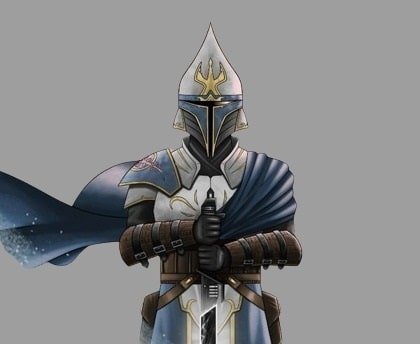
As a Mandalorian warrior from an influential clan, Tarre Vizsla owned several expensive suits of beskar Mandalorian armor during his lifetime.
During the Republic Dark Age, his preferred armor was a set of heavy beskar’kandar, a type popular among Force users during the Light and Darkness War.
While his beskar helmet had the recognizable Mandalorian T-shaped visor, it was a highly stylized and open-faced variant with a unique design, and instead of the traditional round skullcap, it had a pointed, “sugar loaf” shape meant to help deflect and redirect blows to the head. This helmet displayed the shriek-hawk symbol of his clan, following established Mandalorian tradition. This particular armor set contributed to the look for which Vizsla was best remembered in artistic depictions from the era, and was further immortalized in his large statue in the Valley of the Jedi on Ruusan.
Explore Our Lightsaber Collection
Tony Allen is a writer for LightsabersBlog.com, a website focused on everything related to lightsabers. Tony grew up in Austin, Texas, and went on to study Mechanical Engineering at the University of Texas. Passionate about science fiction and fantasy, Tony has always been deeply involved in hobbies like tabletop RPGs, sci-fi novels, miniature painting, and crafting. This love for creative pursuits drives Tony to write about lightsabers in a way that ignites the imagination of fans around the world.

